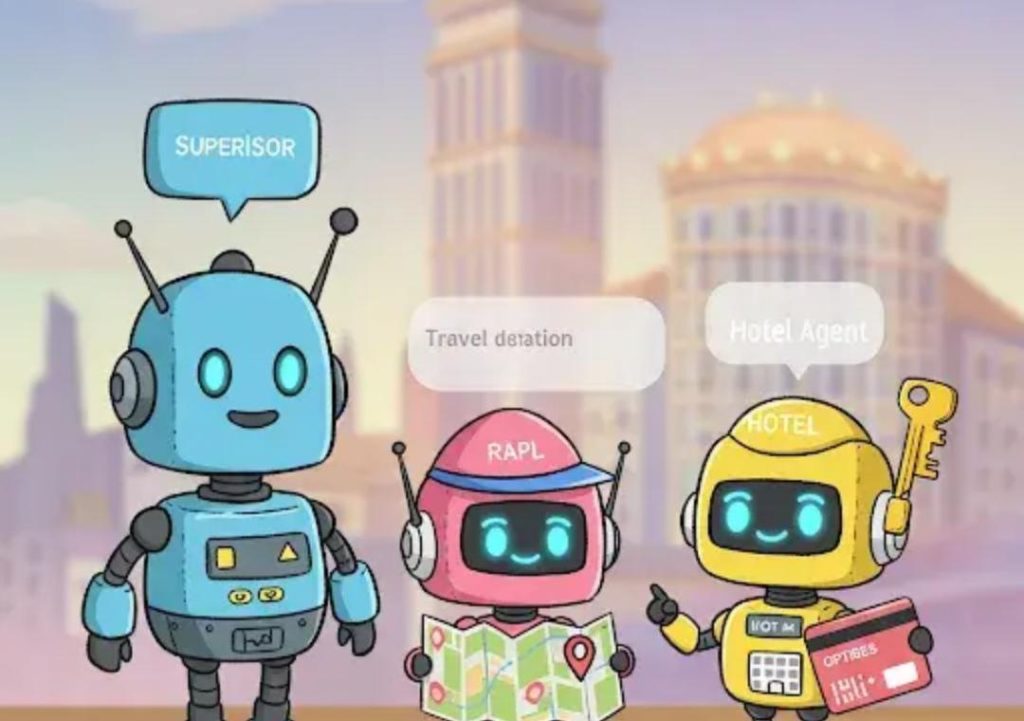
Multi-agent Collaboration Mimics Real Team Dynamics
In the world of artificial intelligence, AI agents are often seen as lone wolves, working independently to complete tasks. However, this approach has its limitations. What if we could deploy a team of AI agents, each with its unique strengths and abilities, to work together seamlessly? Welcome to the world of multi-agent collaboration, where AI agents specialise, communicate, and collaborate across tasks, just like human teams do.
In this blog post, we’ll explore the benefits of multi-agent systems, how they can be applied in various industries, and what the future holds for this innovative approach.
The Limitations of Single-Agent AI
While AI agents have made tremendous progress in recent years, they are still limited by their programming and design. Single-agent AI systems are often designed to perform a specific task, such as image recognition or natural language processing. However, these systems can struggle when faced with complex tasks that require human-like problem-solving skills, adaptability, and creativity.
Moreover, single-agent AI systems can be prone to bias, as they are trained on data that reflects the perspectives of their creators. This can lead to unfair outcomes and perpetuate existing social and economic inequalities.
The Power of Multi-Agent Collaboration
Multi-agent systems, on the other hand, offer a more comprehensive approach to AI development. By deploying multiple agents, each with its unique strengths and abilities, you can create a collaborative environment that mimics human teamwork.
In a multi-agent system, each agent can specialise in a specific task or skill set, such as:
- Research agents: These agents can gather and analyze data, identify patterns, and provide insights.
- Validation agents: These agents can verify the accuracy of the research findings, ensuring that the data is reliable and trustworthy.
- Reporting agents: These agents can present the findings in a clear and concise manner, making it easy to understand and act upon the results.
Benefits of Multi-Agent Collaboration
So, what are the benefits of multi-agent collaboration? Here are a few:
- Improved accuracy: By having multiple agents verify each other’s work, you can increase the accuracy of the results.
- Enhanced creativity: Multi-agent collaboration can lead to innovative solutions that might not have been possible with a single agent.
- Increased efficiency: Agents can work concurrently on different tasks, reducing the overall processing time and increasing productivity.
- Better decision-making: With multiple agents providing insights and perspectives, you can make more informed decisions that take into account various scenarios and outcomes.
Real-World Applications of Multi-Agent Collaboration
So, how can multi-agent collaboration be applied in real-world scenarios? Here are a few examples:
- Healthcare: Multi-agent systems can be used to analyze medical images, identify patterns, and provide diagnoses.
- Finance: Agents can work together to analyze market trends, identify investment opportunities, and provide risk assessments.
- Customer service: A multi-agent system can be used to handle customer inquiries, provide personalized support, and resolve issues.
- Research and development: Agents can collaborate to design and test new products, identify potential issues, and provide feedback.
The Future of Multi-Agent Collaboration
As multi-agent collaboration continues to evolve, we can expect to see even more innovative applications in various industries. Some potential future developments include:
- Human-AI collaboration: Multi-agent systems can be used to augment human capabilities, providing AI-powered support and assistance in various tasks.
- Autonomous decision-making: Agents can work together to make decisions, taking into account various factors and scenarios.
- Adaptive learning: Multi-agent systems can learn from each other, adapting to new situations and improving their performance over time.
Conclusion
Multi-agent collaboration is a game-changer in the world of AI. By deploying multiple agents, each with its unique strengths and abilities, you can create a collaborative environment that mimics human teamwork. This approach offers numerous benefits, including improved accuracy, enhanced creativity, increased efficiency, and better decision-making.
As multi-agent collaboration continues to evolve, we can expect to see even more innovative applications in various industries. Whether it’s in healthcare, finance, customer service, or research and development, multi-agent systems have the potential to revolutionize the way we work and live.
News Source



